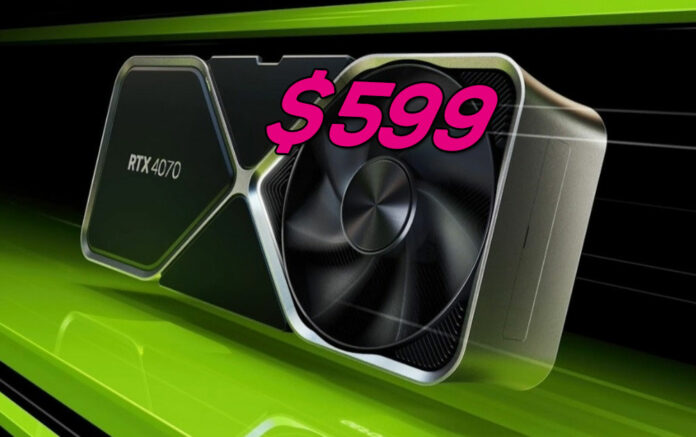PC gaming enthusiasts have been pondering the same question for many years; when will the best graphics card finally drop in price?
A very important point, as while building a rig has garnered renewed interest in 2023 due to tumbling CPU, memory and SSD prices, GPUs remain stubbornly expensive by comparison. Well, there’s good news as it seems a change is on the horizon.
The latest leaks have confirmed that Nvidia’s upcoming GeForce RTX 4070 will arrive on the market in less than a fortnight priced at $599. That’s significantly less than the $699 figure being bandied about on the rumour mill in recent months.
Why is this significant, given that the adjusted figure is still a hundred bucks more than the $499 launch price of RTX 3070 a few years back? We’re going to go out on a limb and suggest it feels as though the tide is slowly turning. RTX 40 Series, for all its might, has remained in stock and widely available as consumers shy away amid a cost-of-living crisis.
Similar woes have affected other players. AMD attempted to aim high with RX 7900 XTX and 7900 XT, only to be met with muted reception. The latter is already seeing price cuts in an effort to generate sales, and excess stock of previous-generation parts isn’t helping matters. Even Intel, new to the scene, has come to the realisation that significant price cuts are necessary for Arc to make waves.
Our conversations with industry partners reveal AMD is scurrying to respond to Nvidia’s mooted price point. Given that RTX 4070 is almost certain to hold a compelling lead with regards to raytracing and DLSS tech, a fabled Radeon RX 7900 (non-XT) would have to be priced extremely competitively. Is a 7900 Series at $549 even feasible? We’ll have to see, but one thing’s for certain, PC graphics cards are about to get seriously interesting all over again.
To reiterate, the below table helpfully illustrates how RTX 4070 is expected to shape up.
| GeForce | RTX 4090 | RTX 4080 | RTX 4070 TI | RTX 4070* |
|---|---|---|---|---|
| Launch date | Oct 2022 | Nov 2022 | Jan 2023 | Apr 2023 |
| Codename | AD102 | AD103 | AD104 | AD104 |
| Architecture | Ada Lovelace | Ada Lovelace | Ada Lovelace | Ada Lovelace |
| Process (nm) | 4 | 4 | 4 | 4 |
| SMs | 128 of 144 | 76 of 80 | 60 of 60 | 46 of 60 |
| CUDA cores | 16,384 | 9,728 | 7,680 | 5,888 |
| Boost clock (MHz) | 2,520 | 2,505 | 2,610 | 2,475 |
| Peak FP32 TFLOPS | 82.6 | 48.7 | 40.1 | 29.1 |
| RT cores | 128 | 76 | 60 | 46 |
| Tensor cores | 512 | 304 | 240 | 184 |
| Texture units | 512 | 304 | 240 | 184 |
| Memory size (GB) | 24 | 16 | 12 | 12 |
| Memory type | GDDR6X | GDDR6X | GDDR6X | GDDR6X |
| Memory bus (bits) | 384 | 256 | 192 | 192 |
| Memory clock (Gbps) | 21 | 22.4 | 21 | 21 |
| Bandwidth (GB/s) | 1,008 | 717 | 504 | 504 |
| Power (watts) | 450 | 320 | 285 | 200 |
| Launch MSRP ($) | 1,599 | 1,199 | 799 | 599 |


